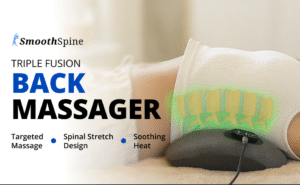Right arm pain: What type of pain is it?
Sharp, dull, stabbing, or radiating pain?
The first step in assessing right arm pain is to describe its characteristics:
Precise location
- Upper arm (shoulder, upper biceps);
- Middle or lower part of the arm (forearm);
- Elbow region (lateral or internal face).
Intensity
- Rate the visual analog scale (0 = no pain, 10 = unbearable pain);
- Mild pain (< 3/10) vs moderate pain (3–7/10) vs severe pain (> 7/10).
Character and duration
- Acute: sudden onset, rapid peak intensity (e.g., muscle strain, fracture);
- Dull: diffuse pain persisting for several hours/days (e.g., chronic tendonitis);
- Throbbing: nerve pain, electric shock type (e.g., pinched nerve);
- Irradiated: starts at the shoulder and goes down to the elbow, forearm, or hand (e.g, neck pain, thoracic outlet syndrome).
Triggers or relievers
- Appearance during movement or effort (lifting an object, raising the arm);
- Presence or absence of pain at rest;
- Aggravating factor: prolonged sitting, muscle tension;
- Relief factor: application of cold/heat, anti-inflammatories.
Irradiation
- Pain radiating from the right arm to the neck or shoulder (e.g., cardiac pain);
- Pain going down to the hand or fingers (e.g., carpal tunnel).
Associated symptoms
To establish a differential diagnosis, it is essential to look for the presence of associated symptoms.
Sensory disorders
- Numbness (paresthesia) of the arm, hand, or fingers;
- Tingling (dysesthesia) is typical of nerve compression;
- Burns suggest a neuropathic cause.
Muscle weakness
- Inability to shake hands;
- Difficulty lifting an object;
- Abnormal fatigue on one side.
General symptoms
- Fever or feverish state;
- Shortness of breath;
- Chest tightness or chest pain radiating to the right arm;
- Palpitations, sensation of a racing heart;
- Sweating, nausea.
Common and benign causes
Many common situations can cause right arm pain in women. The most common are related to musculoskeletal conditions or poor posture.
Musculoskeletal causes
Shoulder or elbow tendonitis
- Rotator cuff tendonitis (shoulder): pain when raising the arm, often during repetitive movements (painting, sports). The tendons (supraspinatus, subscapularis) are inflamed.
- Lateral epicondylitis (tennis elbow): pain around the lateral epicondyle of the elbow, aggravated by gripping or bending the wrist;
- Biceps tendonitis: Anterior shoulder pain, increased when bending the elbow.
Muscle tension
- Repetitive effort: prolonged keyboard typing, manual finishing gestures (sewing, makeup);
- Bad posture: prolonged sitting, neck stretched forward, shoulders rolled, causing tension in the trapezius or deltoid.
Muscle contracture or strain
- Contracture: localized pain, muscle stiffness after exertion or stress, without fiber rupture;
- Tear: sharp, sudden pain, often during a sudden movement, with limited ability to move the arm, and possible bruising.
Cervical osteoarthritis
- Cervical pain radiating into the right arm: wear of the cervical discs causing projected pain (cervicobrachial neuralgia);
- Pain aggravated by prolonged standing or rotating movements of the neck.
Postural or mechanical causes
Prolonged computer work
- Trapezius syndrome: Chronic contractures of the upper trapezius cause diffuse pain in the arm.
- Mouse position: too low or too high, causing tension in the shoulder.
Poor arm positioning at night
- Nervous position: arm under the pillow, classic criterion for postural brachial neuralgia.
- Morning numbness, “sleepy arm” sensation resolved after shaking.
Unsuitable charging port
- Heavy bag on one shoulder: overload of the deltoid, shoulder, and neck.
- Poor weight distribution in mothers carrying a baby on one side leads to muscle asymmetry.
Right arm pain in women: Should we think about the heart?
Contrary to popular belief, cardiac pain can occur in the right arm, especially in women. Although rarer than pain radiating to the left arm, it is still possible.
Atypical cardiac symptoms often seen in women are:
- pain radiating into the right arm, sometimes into the jaw, left shoulder, or between the shoulder blades;
- shortness of breath without marked chest pain;
- nausea, vomiting, persistent nausea;
- inexplicable extreme fatigue ;
- cold sweats, dizziness, vague feeling of unease.
Sudden, non-movement-related, oppressive or squeezing pain that lasts more than 20–30 minutes should raise suspicion of a heart attack even without a history of cardiovascular disease. In women, the presentation is often less classic, making diagnosis more difficult.
The woman should seek emergency care if:
- sudden onset of pain in the right arm + oppression;
- general malaise (nausea, sweating);
- shortness of breath or dizziness.
In these situations, call 15 immediately or go to the emergency room, because every minute counts to limit the extent of the heart attack.
Other possible causes
Beyond musculoskeletal and cardiac causes, several other pathologies deserve consideration, such as:
- Neurological causes: pinched nerve (cervicobrachial neuralgia), carpal tunnel syndrome (compression of the median nerve in the wrist, causing tingling, numbness and pain radiating to the forearm and sometimes down the arm); thoracic outlet syndrome (compression of the vessels or nerves under the collarbone, often in young women, causing pain radiating to the shoulder and arm, associated with weakness or tingling).
- vascular causes: phlebitis of the upper limb (pain, swelling, local heat, risk of migration of the clot to the heart/lungs); circulatory disorders
- gynecological or hormonal causes: perimenopause/menopause (hormonal imbalance promoting diffuse pain or muscle tension, sometimes felt in the right arm); hormonal influence on inflammation (estrogen variations which modulate sensitivity to pain and muscle recovery ).
When to see a doctor?
Consultation should be prompt if:
- Sudden or severe pain, not relieved by rest or basic analgesics;
- Worrying associated symptoms: fever, palpitations, shortness of breath, malaise;
- pain that worsens despite rest, or recurs for several days in a row;
- marked weakness of the arm, loss of function, inability to raise it.
- Neurological symptoms: tingling, severe numbness, loss of sensation.
The healthcare professional may prescribe or carry out:
- Blood test: CBC (full blood count), CRP (inflammation), liver function tests, TSH (if hormonal suspicion), cardiac markers (troponin);
- ECG for cardiac purposes if angina or a heart attack is suspected ;
- muscle or joint ultrasound to visualize tendonitis, bursitis, or effusion;
- X-ray or MRI: cervical (looking for a herniated disc), spine, and shoulder to exclude bone or disc pathology.
- Electromyogram (EMG) in case of suspected thoracic outlet syndrome or advanced carpal tunnel syndrome.
- Venous ultrasound Doppler is used if venous thrombosis of the upper limb is suspected.
How to relieve right arm pain?
If the cause is muscular or joint, the pain on the right side in women will disappear with:
- Rest: avoid movements or activities that aggravate the condition (lifting weights, prolonged position);
- The application of cold or heat.
- Anti-inflammatory drugs (NSAIDs) after medical advice.
- gentle stretching and postural correction
- physiotherapy sessions
If the pain persists or is of nervous origin, long-term treatment on medical advice is necessary.























+ There are no comments
Add yours